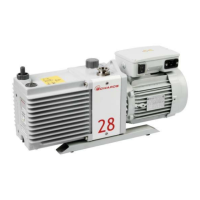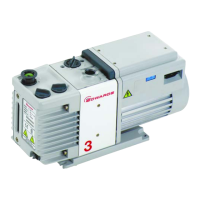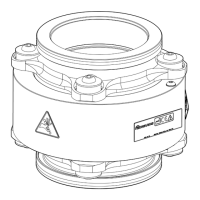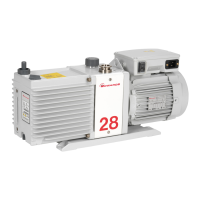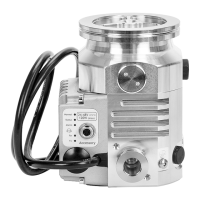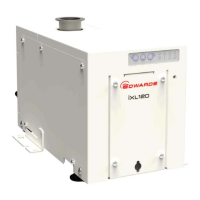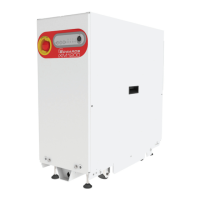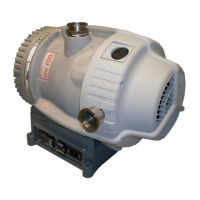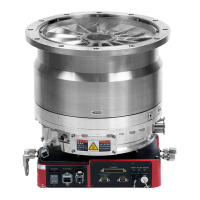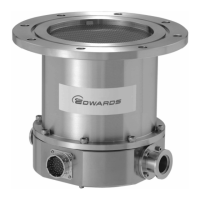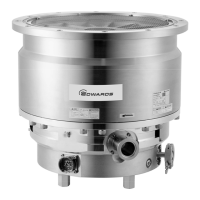© Edwards Limited 2008. All rights reserved. Page 43
Edwards and the Edwards logo are trademarks of Edwards Limited.
Maintenance
S900-01-880 Issue C
No pump will give good results on a poor vacuum system. If the vacuum performance in the system is unsatisfactory,
the usual cause is leakage into the system. If your system has poor vacuum performance, you should first tighten all
connections and fittings, and check that all valves are closed. Use liquid sealant to make the pipeline connections;
do not use Teflon tape.
A pressure rise test will help to localise a vacuum leak. To carry out such a test, successively isolate and evacuate
each section of the vacuum system, then measure the in-leakage rate (the pressure rise) of each isolated section, to
isolate the leak. Use a vacuum leak detector to speed up this process.
If required, Edwards offers vacuum leak detection services.
Table 17 - Troubleshooting
Symptom Probable cause Recommended solution
The booster pump does not
start
Electrical Check the electrical supply and control
wiring.
Rotor rub or damage Restore the clearances.
Casing distortion Relieve any pipe strain or body distortion.
Foreign material Check the system for foreign material, and
clean as necessary.
No gas flow Speed too low Check for belt slip and adjust as necessary.
Wrong rotation Check for correct direction of rotation,
switch any two phase connections if
necessary.
Obstruction in piping Check pipelines, valves for open flow path.
Bypass open Use a momentary gas rush to free the valve.
Low capacity Speed too low Check the backing pump.
Excessive pressure rise Check the inlet/outlet (discharge) pressure
against predicted values.
Obstruction in piping Remove the obstruction.
Excessive belt slip Adjust as necessary.
System leak Check the vacuum system, valves, fittings,
and plugs for leaks, and seal as necessary.
Excessive power Speed too high Check pump speed. Compare with the rated
speed.
Pressure too high Check the inlet/outlet (discharge) pressure
against predicted values.
Wrong rotation Check for correct direction of rotation,
switch any two phase connections if
necessary.
Impeller rub Check the outside of the pump cylinder,
endplates, high temperature areas and
impellers for contact.
Impeller tip drags on impeller
or booster pump body
Insufficient clearances Correct the clearances.
Booster pump body distortion Relieve any pipe strain or body distortion.
Excessive operating pressure Remove the cause.
Excessive temperature Remove the cause.
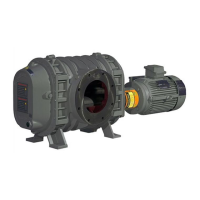
